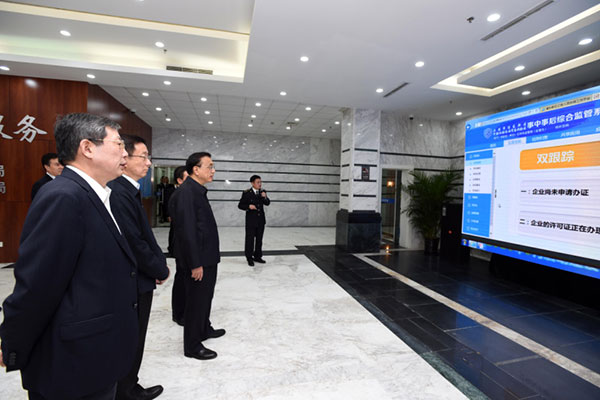
Premier Li Keqiang takes an inspection tour of the Administration Bureau for Shanghai Free Trade Zone on Nov 21, 2016.
Premier Li Keqiang took an inspection tour of the Shanghai Free Trade Zone (FTZ) on Nov 21. It was his third inspection since its establishment in September 2013.
FTZs have become a major platform for China to further expand reform and opening up, break system obstacles and speed up its integration into the global economy.
Over the past three years, a total of 11 FTZs have been established across China, which will become part of a national FTZ network system to further improve the nation’s performance in global economy and trade.
Even with the sluggish growth in global economy and the significant rise of trade protectionism, China has managed to see a significant increase in its share of the global export market and maintained high export volume. The outstanding performance of FTZs in China offered the world an opportunity to reboot the global economy.
In the first five months of 2016, 69,177 enterprises were set up in FTZs in Shanghai, Guangdong, Tianjin and Fujian, and the government has also greatly lowered the threshold for market access in FTZs to enhance trade and investment facilitation.
Besides investment and trade, FTZs have also efficiently helped stimulate the vitality of market entities through promoting the spirit of “mass entrepreneurship and innovation” with the goal of moving toward a more fair and free market system.